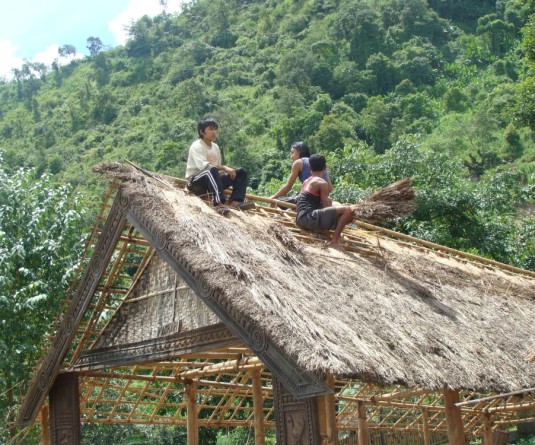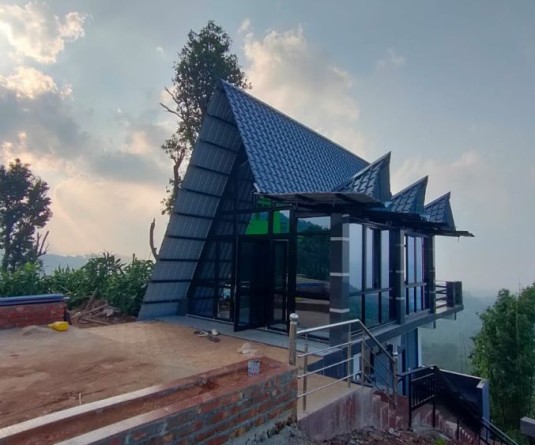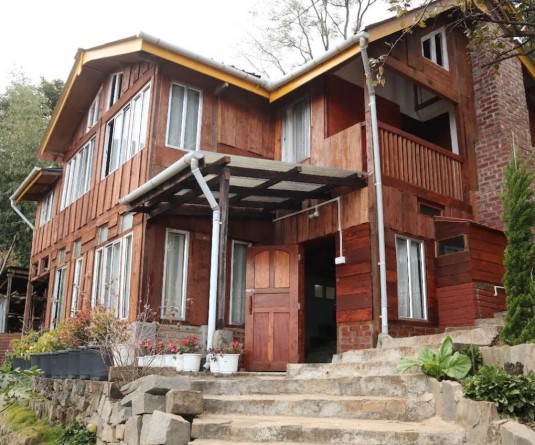A group of children selling vegetables along the Tuensang highway. (Morung Photo)
Human Development in Peril
Morung Express News
Dimapur | June 29
Nagaland, a state endowed with rich sustainable natural resources, mineral wealth and tremendous forest resources, ranks one among the highest as per the human development index (HDI) in India. The 2004 Nagaland HDI report indicates that the state is faring well in all facets including in healthcare, education and income. The state domestic product has increased and agricultural, industrial and infrastructural developments also show tremendous progress.
As per the HDI index, the state domestic product showed an increase from Rs. 57,898 lakh to Rs. 223,042 lakh during 2001. The per capita income rose from Rs.1361 in 1980-81 to Rs.11, 473 during 2000-2001. The per capita income of Nagaland is almost equal to the national average. During the last two decades, the share of various sectors underwent drastic changes. The agriculture sector showed a decline from 28.65 % to 27.48 %. While the secondary sector showed increase, there was decline in the tertiary sector from 58.14 % in 1995-96 to 53.81% in 2001. Entrepreneurship and private businesses have seen tremendous growth.
But, amidst the flash of figures, the reality is that there is a stark difference in terms of development and the quality of life of the people in the state. Over the years, Naga people have been witnessing that the disparity between the rich and the poor, urban and rural is not only persisting, but in many cases it is widening. While some districts have shown tremendous progress, in some areas, human well-being in the past 46 years have virtually remained the same.
The state HDI index shows that enrollment in the primary schools have increased since statehood. Sarva Shiksha Abhiyan has in some ways helped minimize the school-dropout rate but the condition in the remote areas has virtually remained the same. Most government schools are either without teachers or are functioning with a single teacher. The minimum level of learning for educators has also been compromised to a great extent. Therefore, school enrollment and academic performance still remain areas of concern for the state. Nagaland also recorded an afflux of students between the ages 15 and 22 to outside the state. This trend has mostly been in the upper middle class. On the other hand, some children are deprived of their fundamental right to education.
As a composite of HDI, healthcare facilities still elude the many people in the remote areas. The HDI index has shown remarkable improvement in the healthcare scenario of the state but it is still plagued with poor infrastructure. The state is ill-equipped with healthcare professionals and there is sever shortage of doctors. The state has had to pay over Rs 20 crore a year as reimbursements for those from the state who are forced to seek medical treatment outside. Due to difficult terrains and topography, most people in the remote areas don’t have access to proper medical facilities thus impacting the health status of the people.
While Nagaland boasts of the well-being of its citizens, most villages have no access to water supply, sanitation and electricity. The state’s objective to achieving 40lpcd (litre per capita per day) has not been achieved yet. The state’s claim to be 100 % electrified is also sham. Several villages and towns don’t have power connectivity and many face irregular power supply.
The HDI index also reveals the stark regional disparity in the state. While on one hand, districts like Mokokchung, Dimapur and Kohima are flourishing, others like Mon and Tuensang remain largely backward. The government has identified Mon, Tuensang, Kiphire, Peren, Longleng, Meluri sub-division in Phek, Bhandari in Wokha and Pughoboto in Zunheboto as backward areas of the state. The government has instituted special funds for the development of these areas but the reality is appalling.
Roads and communication in the backward areas are in shambles and the human well-being in these areas is nowhere close to comfortable. People here have started exploiting all their available natural resources for sustenance. In many cases, poverty has propelled parents to send their children to work as labourers and domestic help into urban areas.
Even at the grass root level, there is huge disparity among villages in districts like Mokokchung and those in Tuensang. The state human poverty index shows Mokokchung at the lowest, indicating lowest level of deprivation status among all districts, while Mon and Tuensang have consistently ranked the lowest in all indices of HDI.






